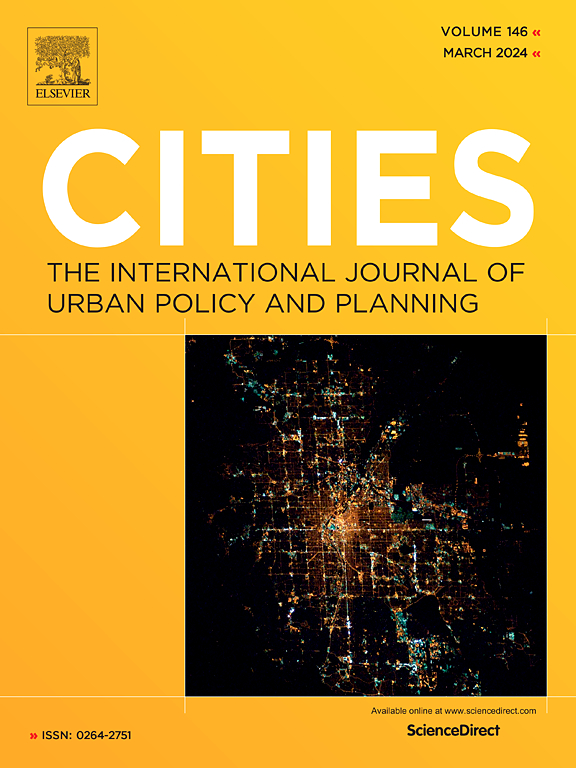城市空间形态与人群时空行为的关系——以拉萨为例
IF 6.6
1区 经济学
Q1 URBAN STUDIES
引用次数: 0
摘要
了解人群行为有助于制定政策,促进城市的宜居性和可持续性。建筑环境的空间形式可以影响人们使用城市地区的方式,因此探索它们之间的相关性越来越被认为是解决新城市发展或现有社区再生的有用支持。研究目标是探索城市空间形态与人群时空行为之间的动态关系,挖掘多源大数据收集与整合的潜力。为此,采用层次聚类和地理分布测度相结合的方法,以中国拉萨为试验点,采用地理加权回归模型检验两者的动态关系。结果表明:拉萨市人群活动强度和波动水平在空间分布上均呈现“核心集聚-外围减弱”的格局;空间形态指数可以解释很大一部分人群时空行为的空间异质性,表现为时间变化不大,但空间变化显著。建筑密度、建筑高度、功能密度、功能组合正向影响人群行为,容积率负向影响。该方法的结果可能与了解人们在城市中如何根据空间形式行事高度相关,并且可以据此得出经验教训,作为城市增长的战略指导。本文章由计算机程序翻译,如有差异,请以英文原文为准。
Correlating urban spatial form and crowd spatiotemporal behavior: A case study of Lhasa, China
Understanding crowd behavior aids policymaking to foster livability and sustainability in cities. Spatial forms of the built environment can influence the way people use urban areas, thus exploring the correlation between them is increasingly deemed a useful support to address new city development or existing neighborhood regeneration. The study goal is to investigate the dynamic relationship between urban spatial morphology and crowd's spatiotemporal behavior, exploiting the potential of multi-source big data collection and integration. Hierarchical clustering and geographic distribution measurement are used to this end, and geographically weighted regression models are used to test their dynamic relationship, adopting Lhasa, China, as test-bed site.
Findings show that in Lhasa both the intensity and fluctuation level of crowd activities follow the “core agglomeration to peripheral weakening” pattern in the spatial distribution. The spatial form index can explain a large portion of the spatial heterogeneity of crowd spatiotemporal behavior, showing minimal temporal variation but significant spatial variation. Building density, building height, functional density, and functional mix positively impact crowd behavior, while plot ratio exerts a negative effect. Outcomes of this methodology could be highly relevant to understand how people behave in cities according to spatial forms, and lesson-learned can be derived accordingly to act as strategic guidance in urban growth.
求助全文
通过发布文献求助,成功后即可免费获取论文全文。
去求助
来源期刊

Cities
URBAN STUDIES-
CiteScore
11.20
自引率
9.00%
发文量
517
期刊介绍:
Cities offers a comprehensive range of articles on all aspects of urban policy. It provides an international and interdisciplinary platform for the exchange of ideas and information between urban planners and policy makers from national and local government, non-government organizations, academia and consultancy. The primary aims of the journal are to analyse and assess past and present urban development and management as a reflection of effective, ineffective and non-existent planning policies; and the promotion of the implementation of appropriate urban policies in both the developed and the developing world.
 求助内容:
求助内容: 应助结果提醒方式:
应助结果提醒方式:


